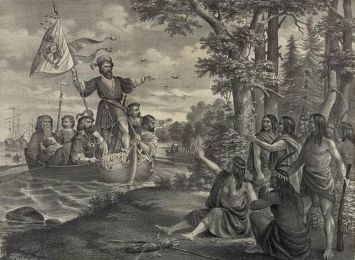Part i: Introduction; Part ii: Initial European Expeditions; Part iii: Sir Walter Raleigh and the Arrival of the English; Part iv: Seventeenth-Century Explorers; Part v: References
See also: Amadas and Barlowe Expedition; De Soto Expedition; Lederer Expedition; Lost Colony; Pardo Expeditions; Roanoke Voyages; Verrazano Expedition

Beginning in the fifteenth century, the European powers of France, Spain, Portugal, and England launched several voyages to explore the New World, including the region that would become North Carolina. Their initial motivation was primarily economic, brought on after Christopher Columbus's arrival in the Americas in 1492. Several navigators arrived in the following months and years, searching for the riches of what they thought was East Asia. National rivalries soon began to fuel the quest to discover and acquire the treasures of new lands. These nations also sought to create colonies that would extract the wealth of the Americas and its people, and export it to the mother country. Spain and France became early leaders in the race to explore and colonize the New World. England, by contrast, did not develop a significant interest in exploration and settlement until the reign of Queen Elizabeth I in the second half of the sixteenth century.